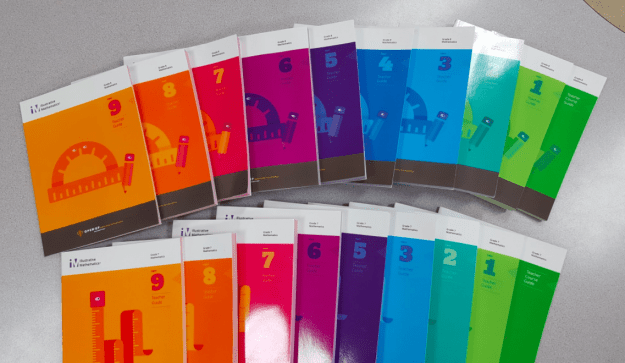OER math curriculum from Open Up Resources aces a big test

When EdReports reviews curricula, educators take notice. So Open Up Resources and Illustrative Mathematics — partners in developing an integrated math curriculum of open educational resources (OER) for grades 6-8 — were thrilled with the results of a review released Wednesday.
All three grades received a near-perfect 69 out of 70 points.
Those scores make it the highest-rated math curriculum reviewed to-date by EdReports, and the only middle school math series to earn the highest designation in all three review categories: standards alignment focus and coherence; standards alignment rigor and mathematical practices; and usability.
It’s the kind of news that probably will spur more districts to take notice, said Jason Zimba, founding partner of the nonprofit Student Achievement Partners and one of the three lead authors of Common Core math standards.
“According to the studies I’ve seen, many teachers still think about OER in terms of searching the internet for standalone worksheets and lessons,” Zimba told EdScoop. “These results could help change the paradigm so that people look to OER for a comprehensive, aligned math curriculum.”
For Open Up Resources — a nonprofit publisher of free OER — the review validates the company’s approach to creating curriculum. Larry Singer, the CEO, compared it to the way Silicon Valley companies create software code — with rigorous attention to producing high-quality output.
“This is like getting the upper right-hand quadrant when everyone is in the lower left-hand quadrant,” Singer said in an interview. “Our quality process starts with picking authors who know what they’re doing and write great curriculum.”
He credited lead author Bill McCallum of Illustrative Mathematics for putting together a great team of mathematicians and teachers to create the curriculum. Open Up then pulled in another team “to find the mistakes and make it better,” Singer added.
One key was treating all three grades’ materials as a coherent whole, where the structure and pedagogy are aligned. Singer said the intent was to be sure each part built on what came before, providing the same tools, so that students would spend less time relearning concepts from the previous year.
That approach is borne out by teachers’ comments.
“I love that it had an overall blueprint that is very obvious before it was put together,” said Stefanie Buckner, a K-12 curriculum specialist in Asheville, North Carolina. “It’s truly a curriculum that thought about the major work of the grade, the support of the work of the grade, the interplay [between them].”
The Williamsfield, Illinois, school district was so enthusiastic about the curriculum that after piloting the 6th grade module for the first half of the school year, officials decided to add the 7th and 8th grade sections mid-year — at teachers’ request.
Singer said the curriculum is available as an HTML stream, downloadable as a file set that can be loaded into a school system’s learning management system and downloadable as a PDF or a version for Microsoft Word. Microsoft has a pilot going with Open Up Resources for a OneNote version, which Singer said would soon move out of the pilot phase and to general release.
“The traditional question of how many states have adopted [our curriculum] isn’t even a reasonable question anymore,” Singer said. “Evaluations are going on with full registration in all 50 states.”



